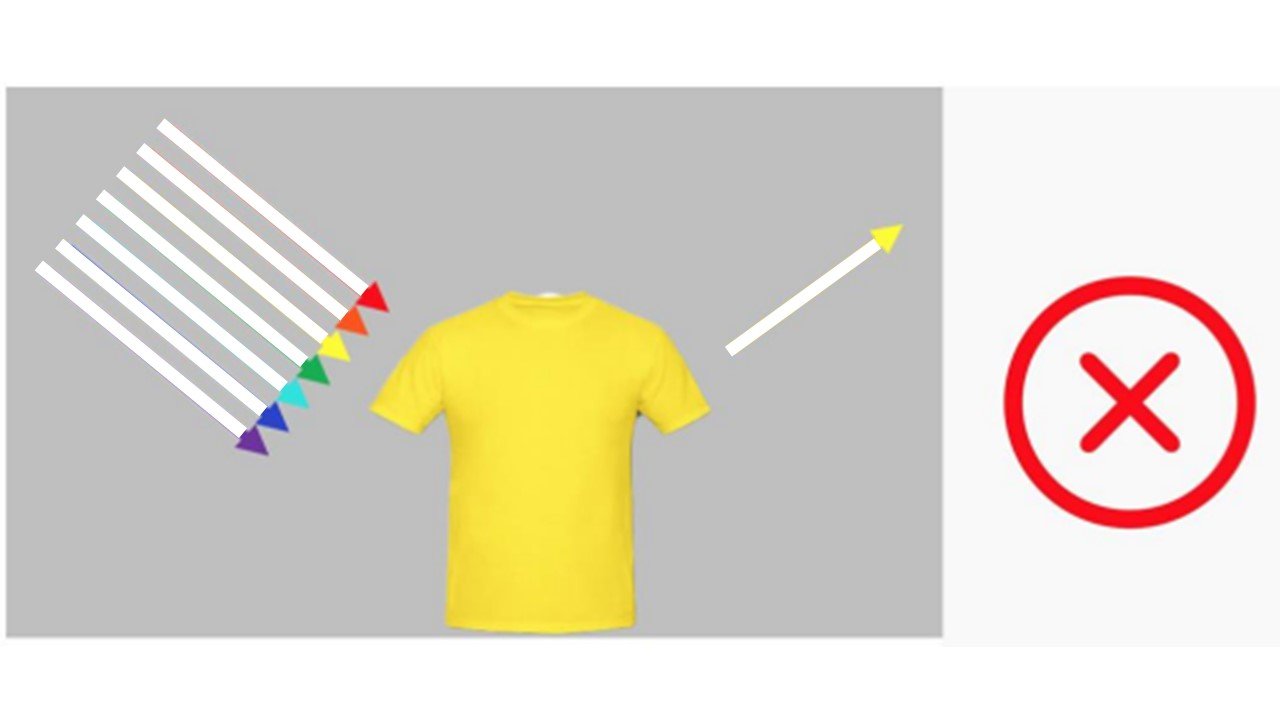Misconception: Yellow objects reflect only yellow wavelengths to our eyes
Concept Corrected: Coloured objects reflect light which contains a distribution of all wavelengths
Light is key for our perception of colours. When we look at most objects in our world, they first need to be illuminated by a source of light. If the object appears coloured, it reflects some but not all wavelengths of light to our eyes
‘Yellow wavelengths’ are not reflected to our eyes.
There is a common misconception that yellow coloured objects reflect only ‘yellow wavelengths’ to our eyes. This misconception applies to all (vividly) coloured objects: e.g. red coloured objects appear red because they reflect only ‘red wavelengths’ to our eyes.
When we see coloured objects, light with a distribution of all wavelengths is reflected to our eyes. When we perceive a yellow t-shirt, the distribution of reflected light has relatively more longer wavelengths, compared to shorter wavelengths. (Original image courtesy of Steve Westland.)
There are two problems with statements like these. First of all, the wavelengths of light themselves are not coloured. Colour is a perception, which results when our visual system interprets light which enters our eyes. Second of all, coloured objects reflect light with a range of wavelengths to our eyes, not just a single wavelength.
Light beams which contain a distribution of all wavelengths are reflected to our eyes by yellow coloured objects (or any other colour) - but the amount of light reflected across the spectrum varies: this is what allows us to see in colour. When we perceive a yellow t-shirt, the distribution of reflected light has relatively more longer wavelengths, compared to shorter wavelengths. This distribution of light is interpreted by our visual system as the perception of yellow. It is the way that our eye and brain interpret light’s whole distribution or balance of wavelengths (in context with the surroundings) which gives rise to colour perception.
Find out more
Check out Dr. Stephen Westland correcting misconceptions about yellow.







